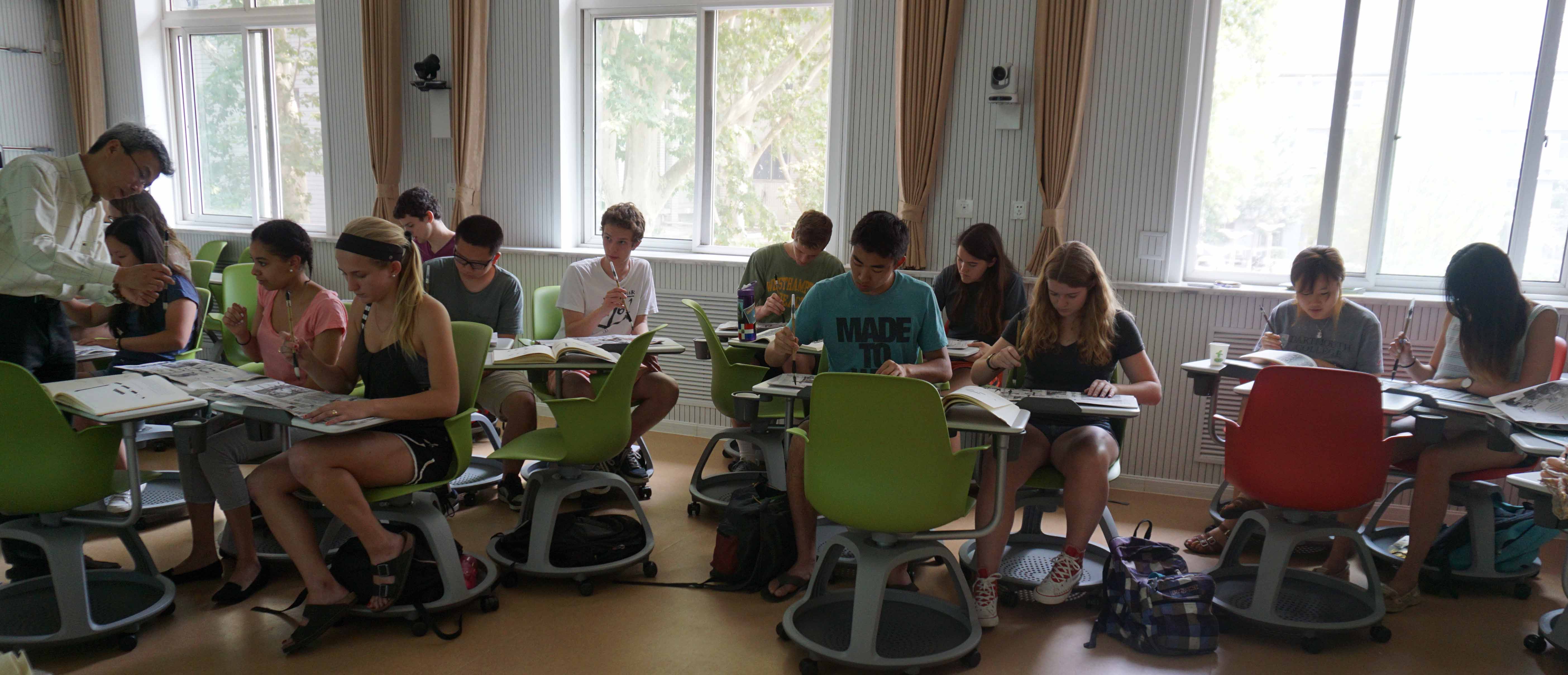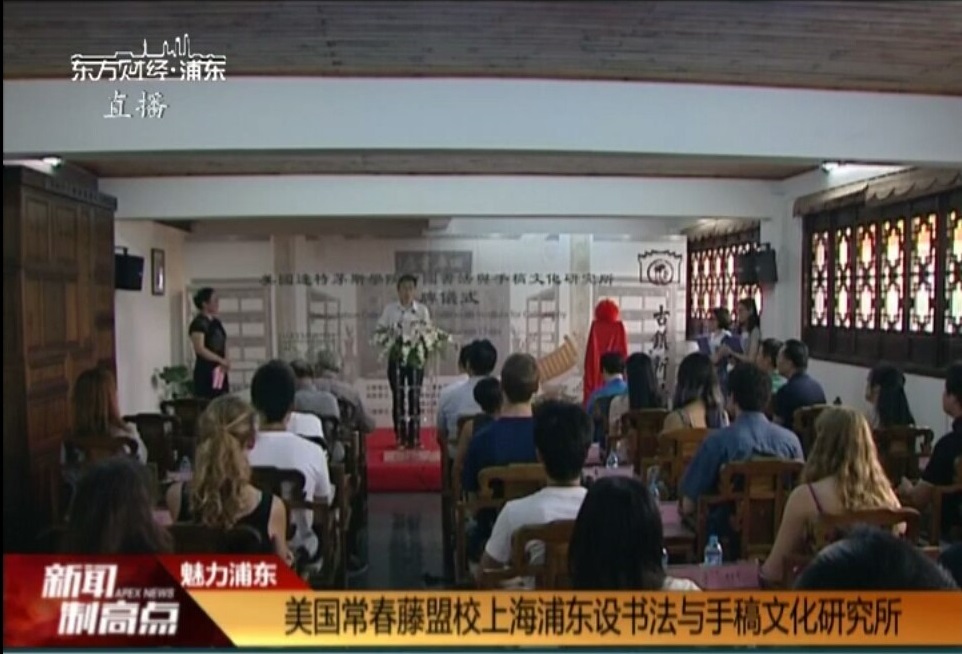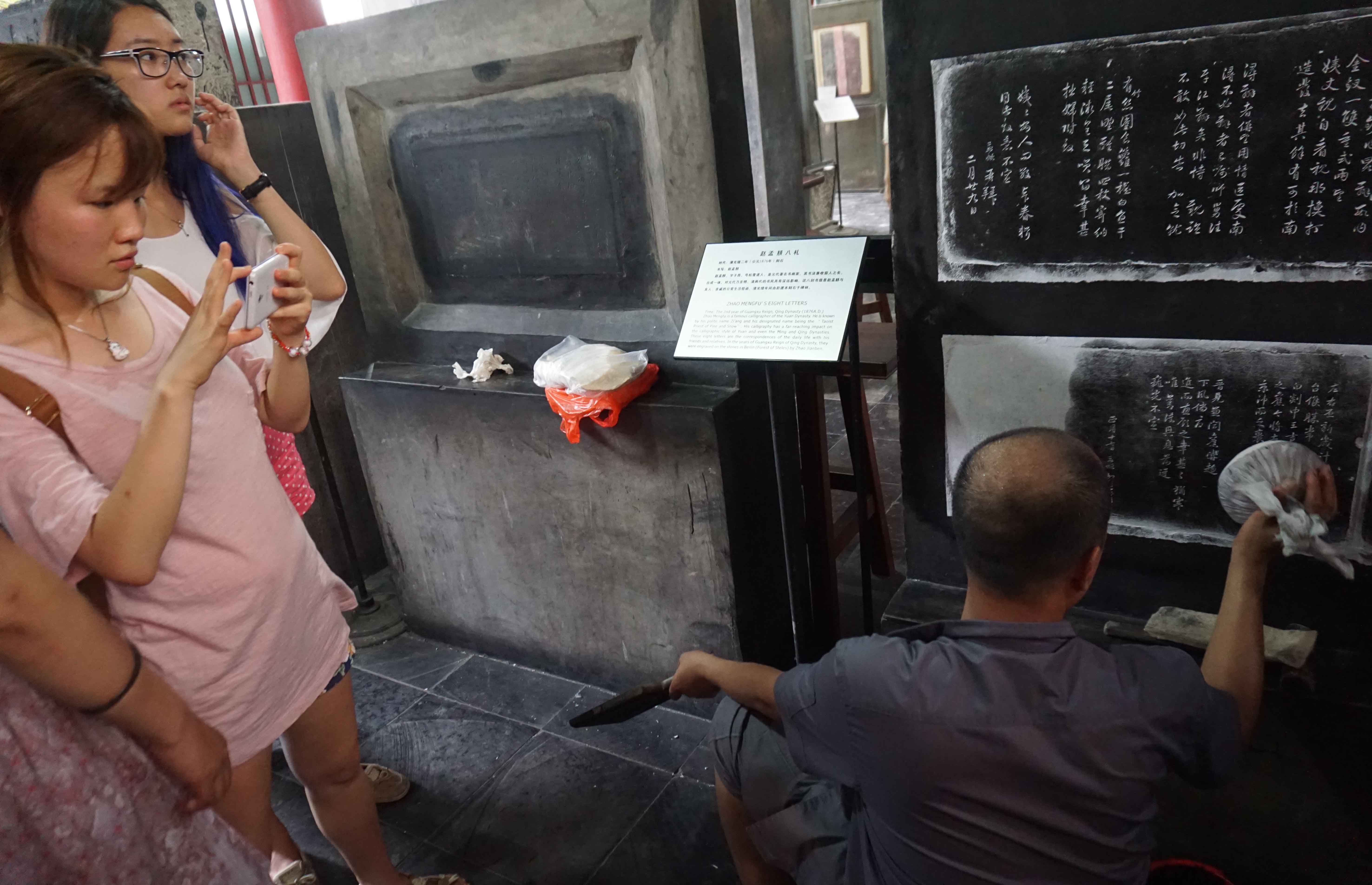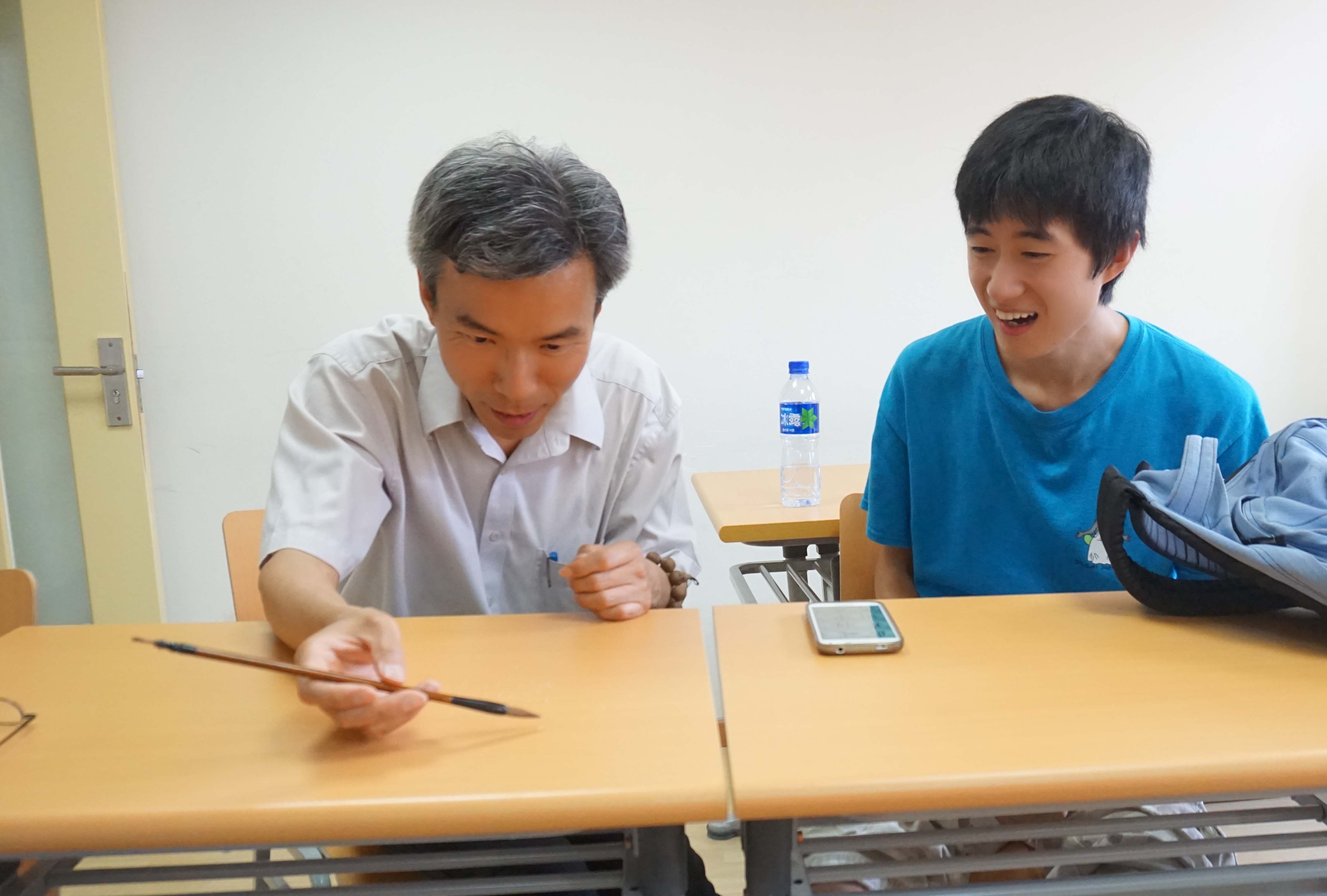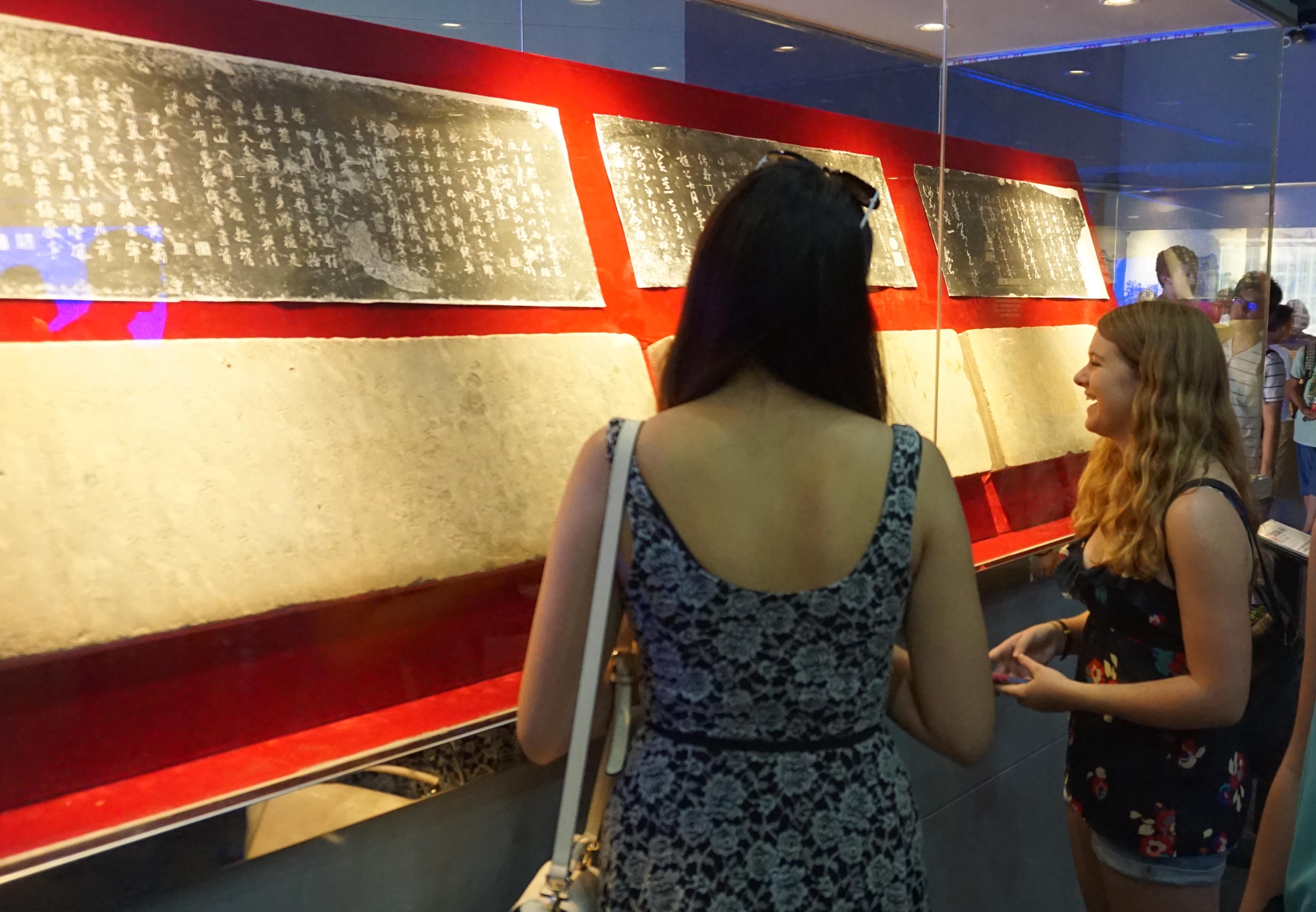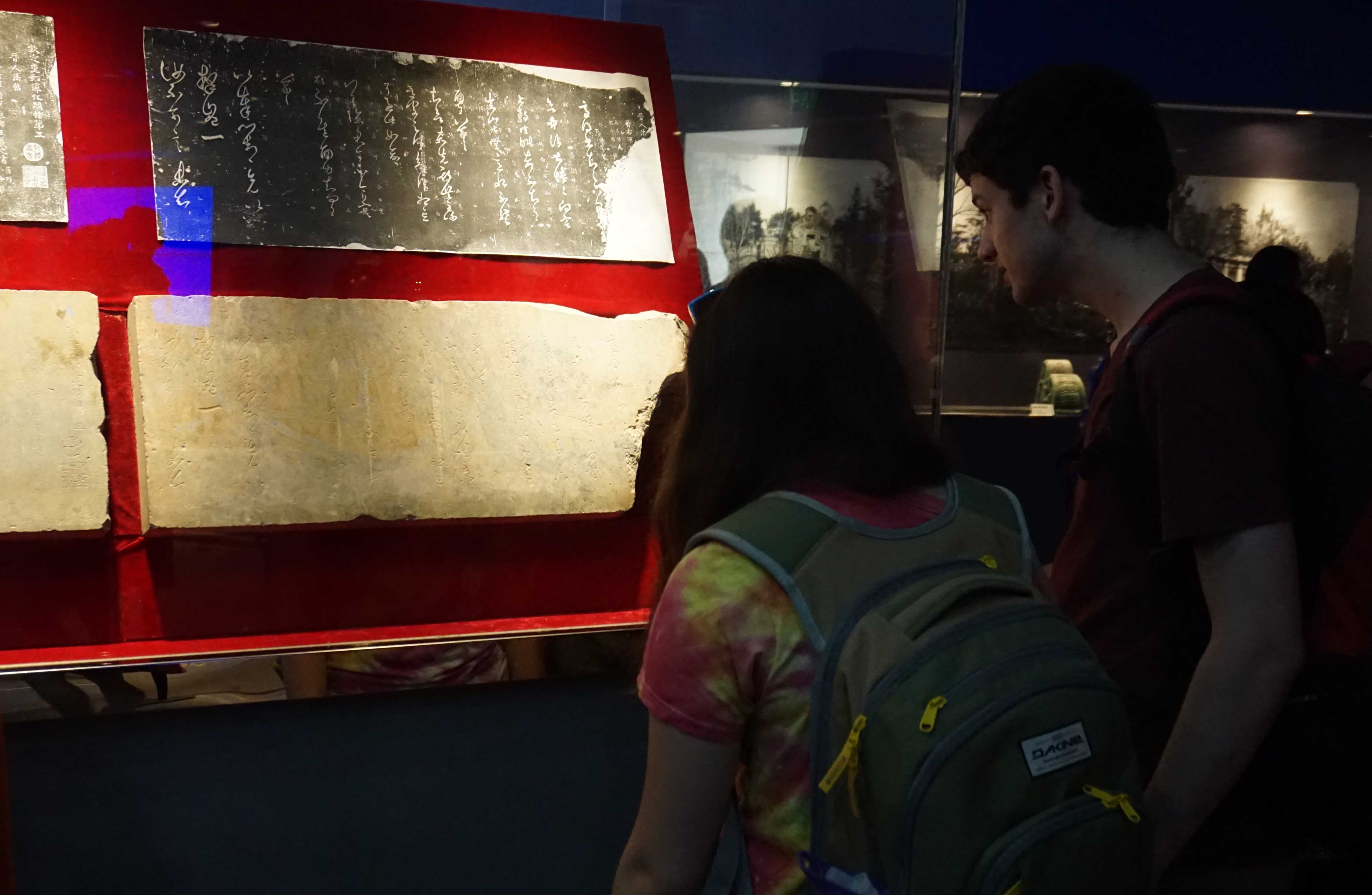Dartmouth Students Enjoyed Chinese Calligraphy Projects in China

Author Archives: Wen Xing
DIC Shanghai
The Dartmouth Institute for Calligraphy and Manuscript Culture in China (DIC) set up its office and studio in the Imperial Library – the Siku Study at Xinchang, Pudong District, Shanghai. On August 15, 2015, Mr. Zhao Ruichun, Deputy Minister of the Publicity Department of Pudong District and Mr. Cai Baoguang, Secretary General of the China Cultural Heritage Foundation unveiled the plaque of the DIC in the opening ceremony in Pudong.
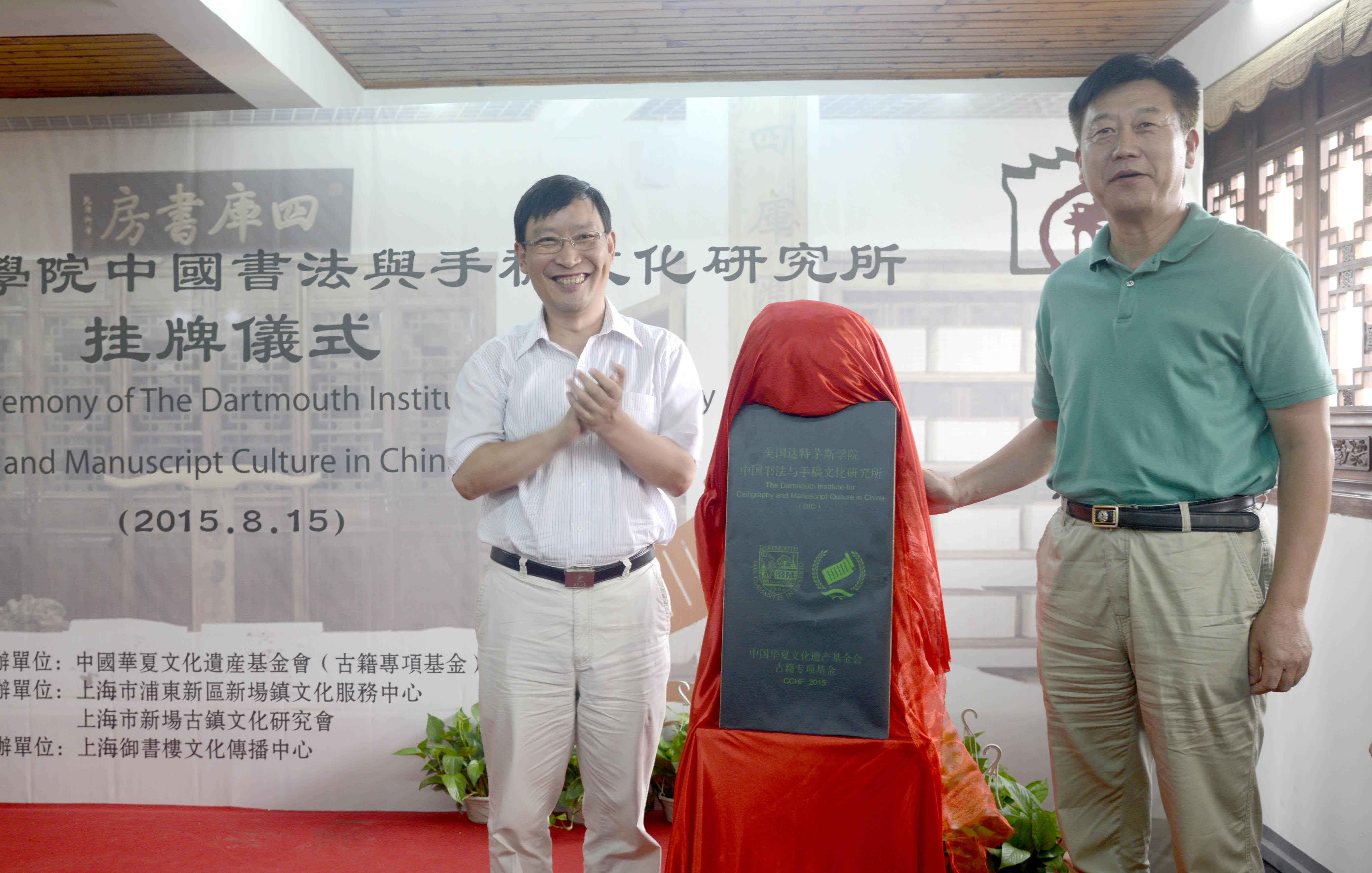
Deputy Minister Zhao Ruichun and Secretary General Cai Baoguang Unveiling the DIC Plaque
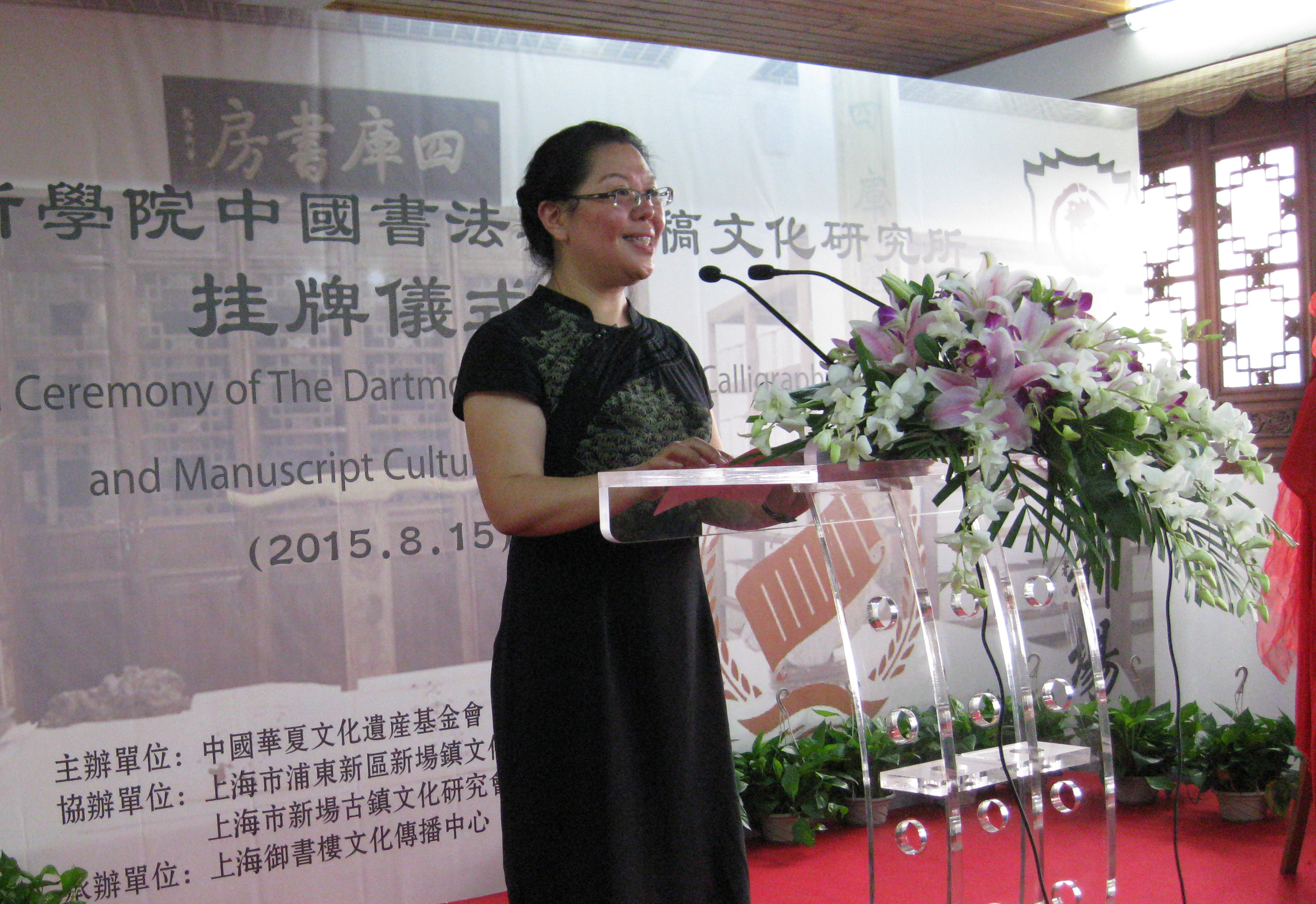
Director Liu Heran (Special Fund for Ancient Books of the China Cultural Heritage Foundation) Chairing the Ceremony

Renowned Calligraphy Expert Dr. Fu Shen Donating His Calligraphy to Mayor Lin Tingjun
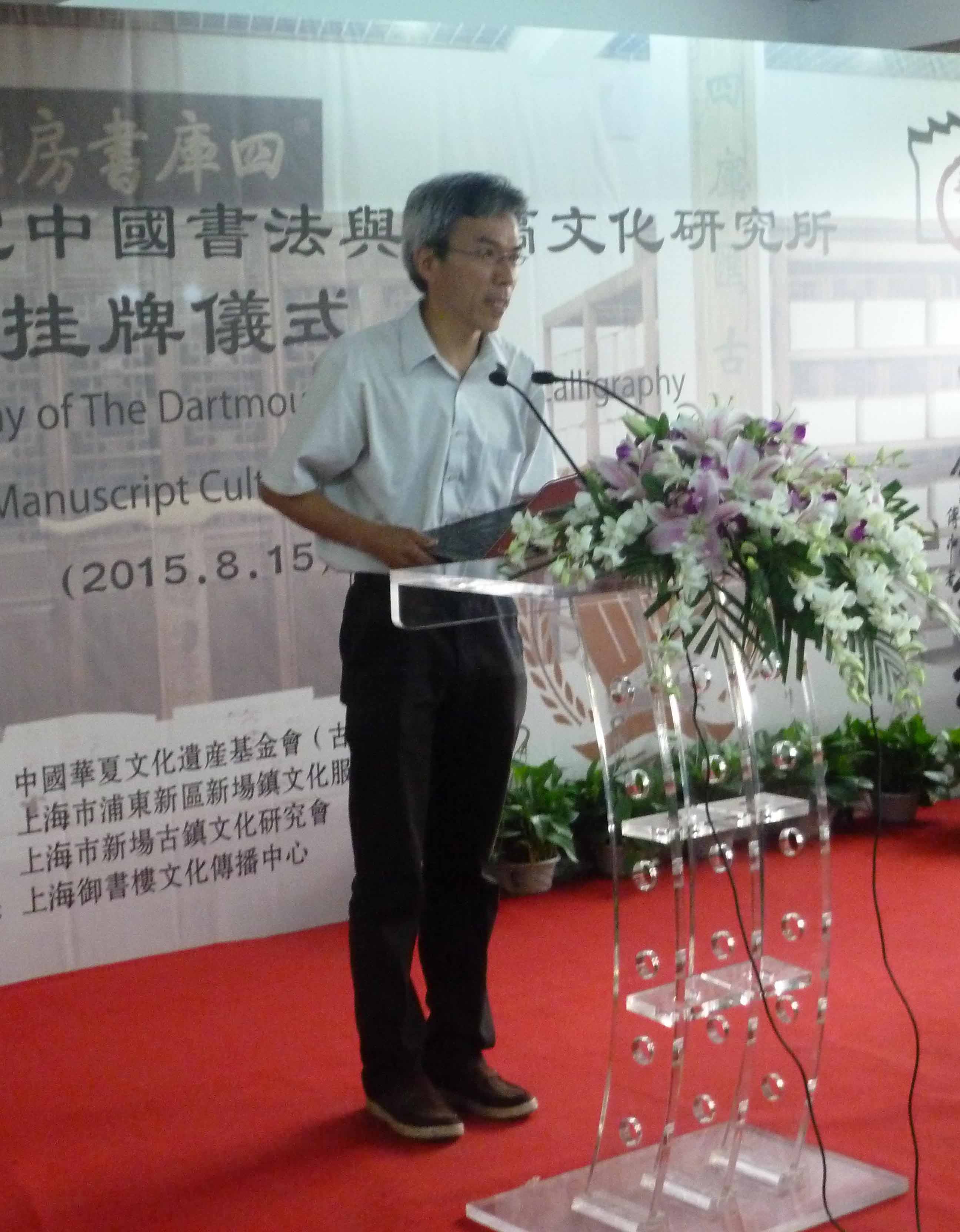
Prof. Xing Wen Delivering Opening Remarks
The Forest of Stelae
August 1, 2015, Dartmouth students visited the Forest of Stelae in Xi’an, Northwest China. Prof. Xing highlighted a Tang Dynasty Emperor’s calligraphy of the Filial Piety and had the following picture taken in front of the masterpiece.

Some Dartmouth students looked into the details of the stone classic in clerical script.

Now the students understood why the characters in the calligraphy masterpieces included in our calligraphy textbook were white with black background.

Master Mengcan’s Buddhist Calligraphy
July 28, 2015 was a day of Master Mengcan’s calligraphy for Prof. Xing. Master Mengcan, born in July 1915, is one of the most prominent Buddhist masters in China. In the morning, Prof. Xing had the honor to view the following two pieces of Master Mengcan’s calligraphy work:
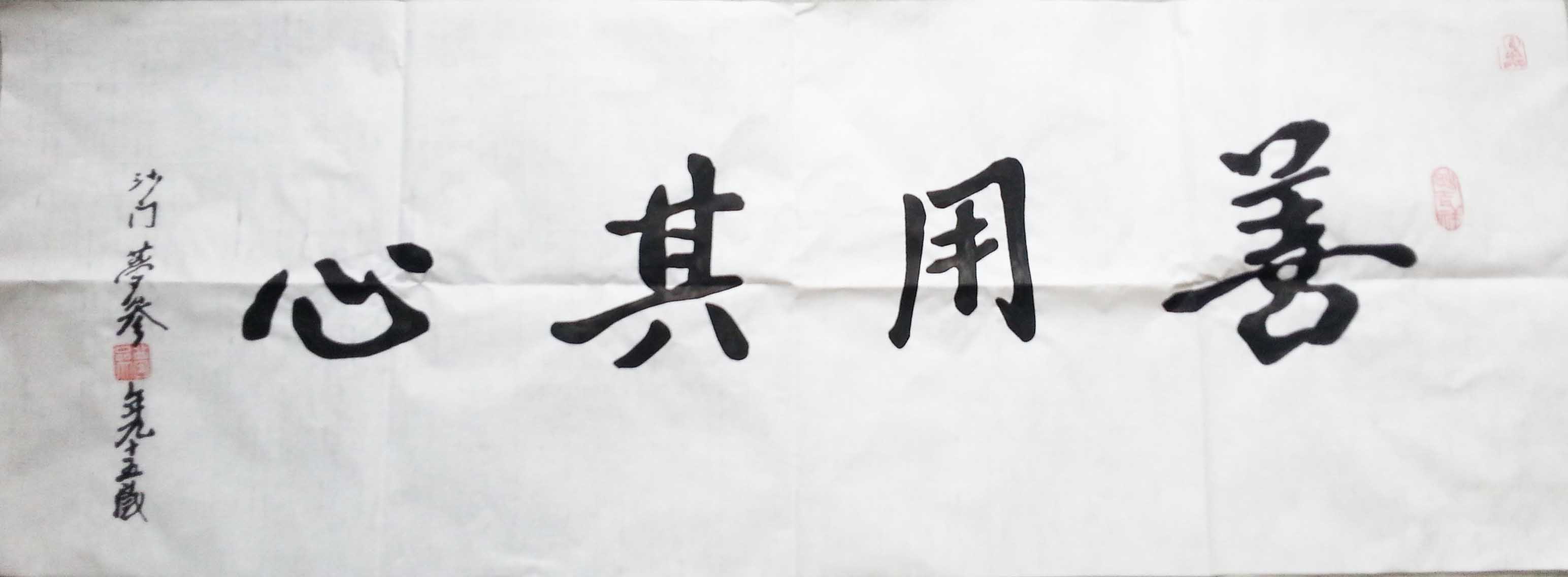
Master Mengcan’s Calligraphy Done When He Was 95

Master Mengcan’s Calligraphy Done When He Was 100
In the afternoon, Prof. Xing talked on Master Mengcan’s calligraphy in CH 11 as scheduled:


(left) Master Mengcan’s Calligraphy Reconstructed by Wen Xing
Prof. Xing Taught Calligraphy in Beijing
Ancient Calligraphy in the Old Summer Palace
Xing’s Lectures on Chinese Manuscript Culture
Prof. Wen Xing, Director of The Dartmouth Institute for Calligraphy and Manuscript Culture in China, recently delivered two lectures on Chinese Manuscript Culture in Beijing. On June 24, 2015, Xing talked on “Chinese Manuscript Culture as Art Anthropology” at the Graduate School of the Chinese Academy of Arts. On July 22, Xing further discussed “Two Intellectual Issues of Chinese Manuscript Culture” at the Institute of Philosophy of the Chinese Academy of Social Sciences.

Xing Received National Award
New Year Poem in English
An English version of Mr. Zhang Fangsong’s new year poem
甲午骏马天行健,
乙未美羊天地宽。
遥闻爆竹知更岁,
偶见梅花觉已春。
reads(章方松先生贺岁诗英译如下):
The excellent steed finished the jiawu (the 31st in the current calendar cycle) year with a powerful cosmic performance;
The beautiful goat brings the yiwei (the 32nd in the current calendar cycle) year to the vast expanse between heaven and earth.
In the distance, the sound of bamboo firecrackers hails the arrival of a new year;
Occasionally, early plum blossoms signal the arrival of spring.
Translated by Jonathan Krause, a recipient of the Joseph Fletche Memorial Award for Excellence in A.M. Thesis at Harvard and a medical student at the Paul L. Foster School of Medicine
(由美国哈佛大学优秀研究生论文奖——约瑟夫•弗莱奇纪念奖获得者、美国保罗•福斯特医学院研究生柯子伦先生翻译)
New Year Poem in Couplets
A Chines New Year celebration poem in two couplets:
甲午骏马天行健,
乙未美羊天地宽。
遥闻爆竹知更岁,
偶见梅花觉已春。

Poem and calligraphy by Zhang Fangsong 章方松




